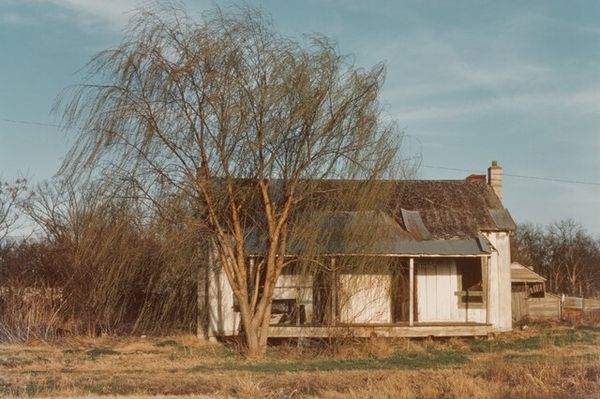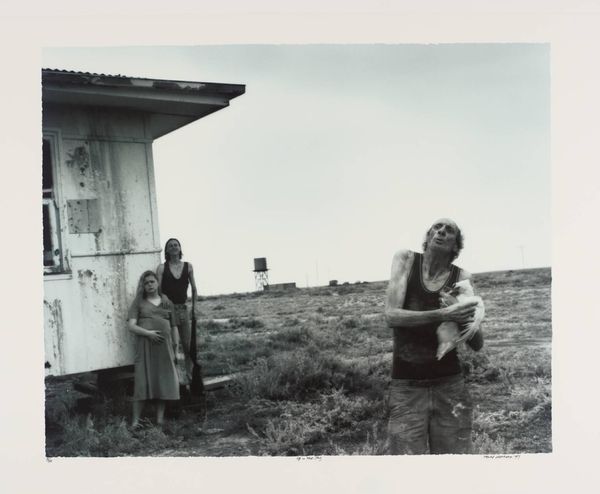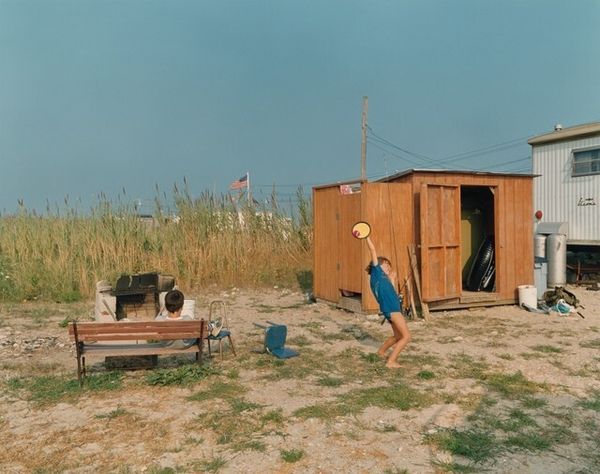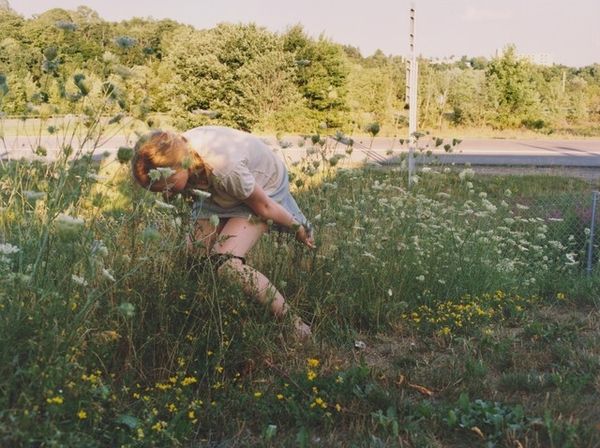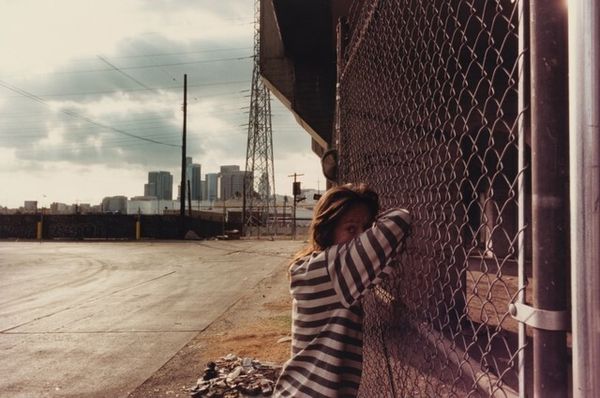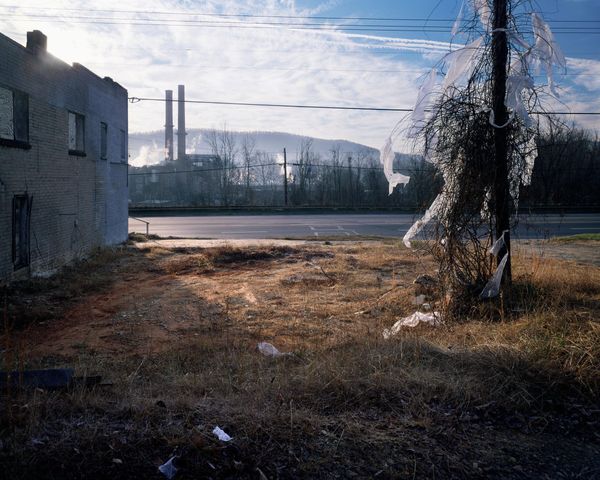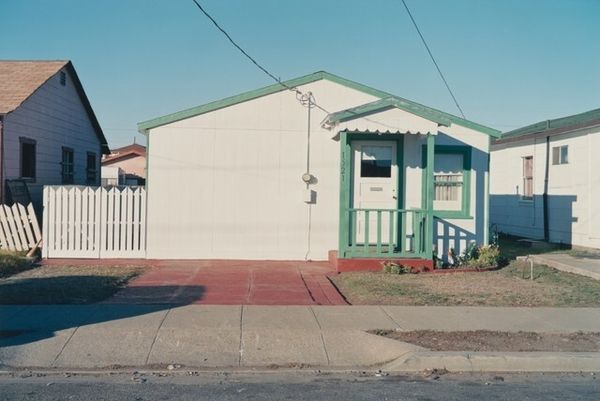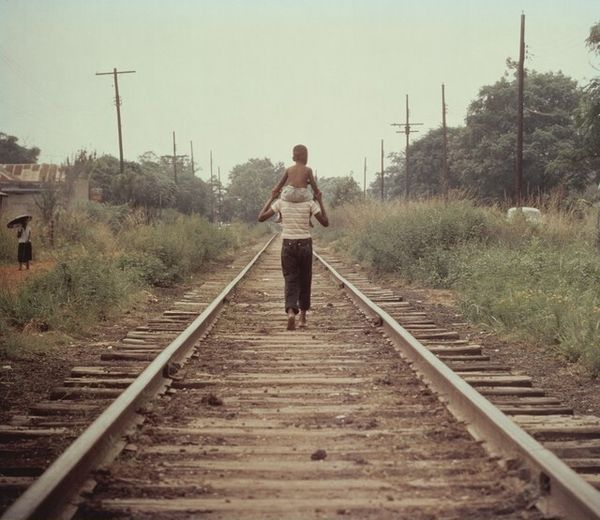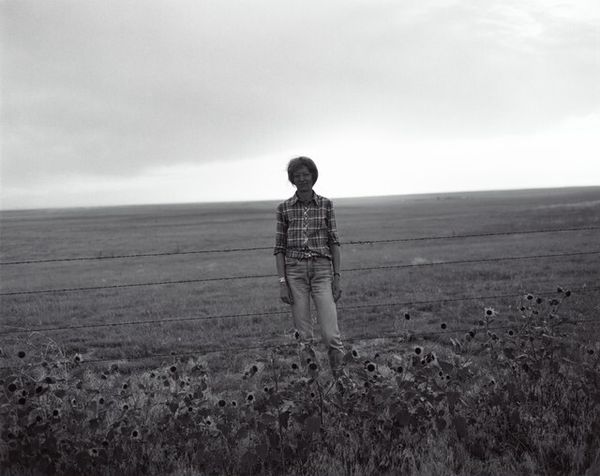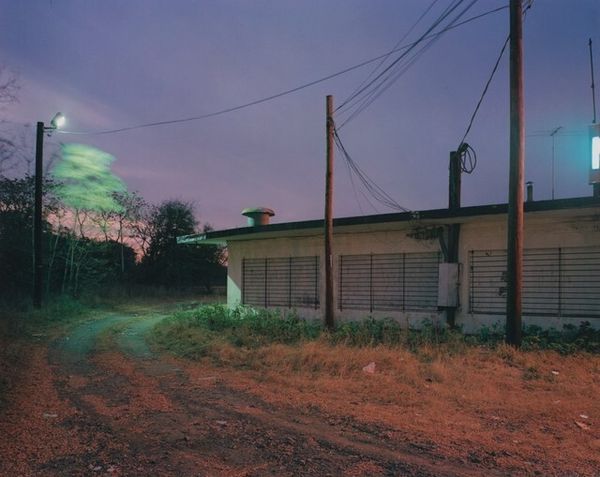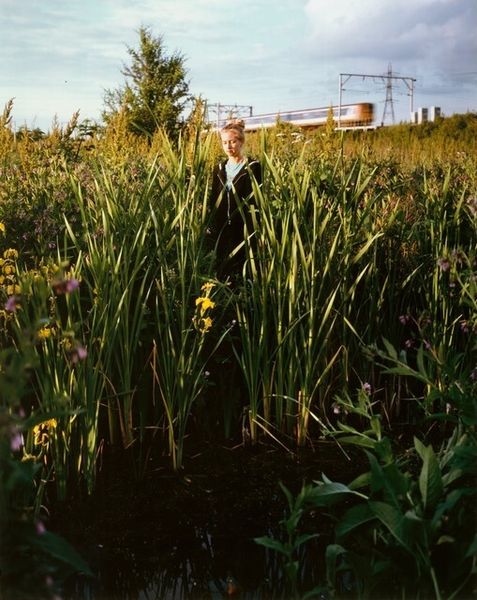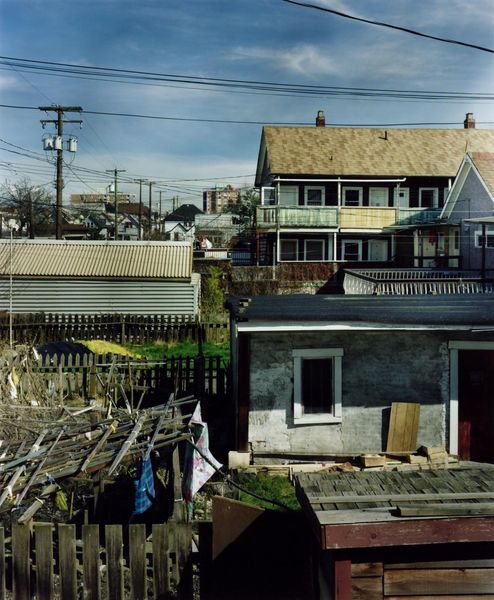
plein-air, photography
#
contemporary
#
plein-air
#
landscape
#
outdoor photograph
#
nature
#
street-photography
#
photography
Dimensions: image: 76.2 x 101.6 cm (30 x 40 in.)
Copyright: National Gallery of Art: CC0 1.0
Curator: Here we have Justine Kurland's "Roadkill," created in 2000. Kurland is known for her plein-air photographs, often featuring young women in pastoral, sometimes unsettling, landscapes. Editor: My initial reaction is melancholy. There’s a stark contrast between the figure’s youth and the dead bird she carries. It evokes a sense of lost innocence or perhaps a commentary on our relationship with nature. Curator: Absolutely. Kurland's work often intersects with themes of societal expectations and female identity. "Roadkill" isn’t just about the dead animal; it’s about the woman, her agency within this environment. There's a palpable tension. Are we to read it as transgression, survival, or simply the mundane reality of a rural existence? Editor: The bird is heavy with symbolic baggage, though. Throughout history, birds often signify freedom, spirit, or even the soul. Here, it's defiled. Is it a commentary on the ecological crisis? The death of ideals? It sits almost as a trophy, or a burden—heavy both physically, perhaps, and emotionally? Curator: It could also be argued as a subversive act. This image presents a challenge to idealized feminine narratives. By holding this dead bird, she's rejecting that trope, refusing the pastoral ideal. Consider the wider discourse about rural spaces, where certain bodies are more visible and thus subjected to heightened scrutiny and control. Her act reframes that power dynamic, she claims ownership in this very landscape. Editor: But does the stark ordinariness, even bleakness of this landscape heighten that unease? A nondescript road behind a flat, open field that does not romanticize nature or promise abundance. A sense that even this potential for protest is somehow futile in its setting? Curator: That tension is precisely what makes the image compelling, even provocative. Kurland resists providing any resolution, forcing viewers to confront complex layers of interpretation around gender, environment, and the very concept of the American landscape. Editor: It definitely leaves a mark. Seeing a traditionally feminine symbol positioned with an image of literal death is not easily dismissed, there are many implications. Thank you for shedding some more light on its complexity! Curator: And thank you, for unpacking those heavy cultural meanings that echo through time!
Comments
No comments
Be the first to comment and join the conversation on the ultimate creative platform.
